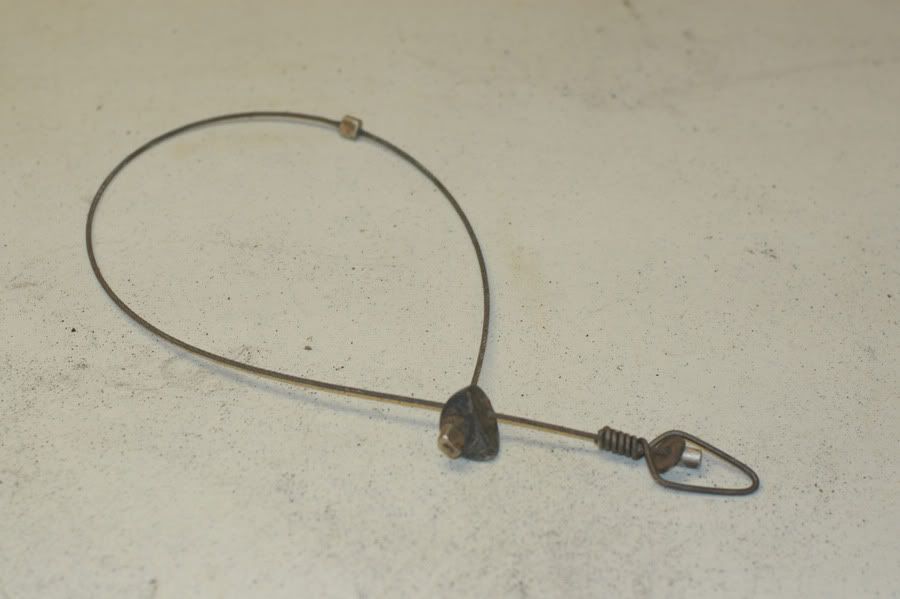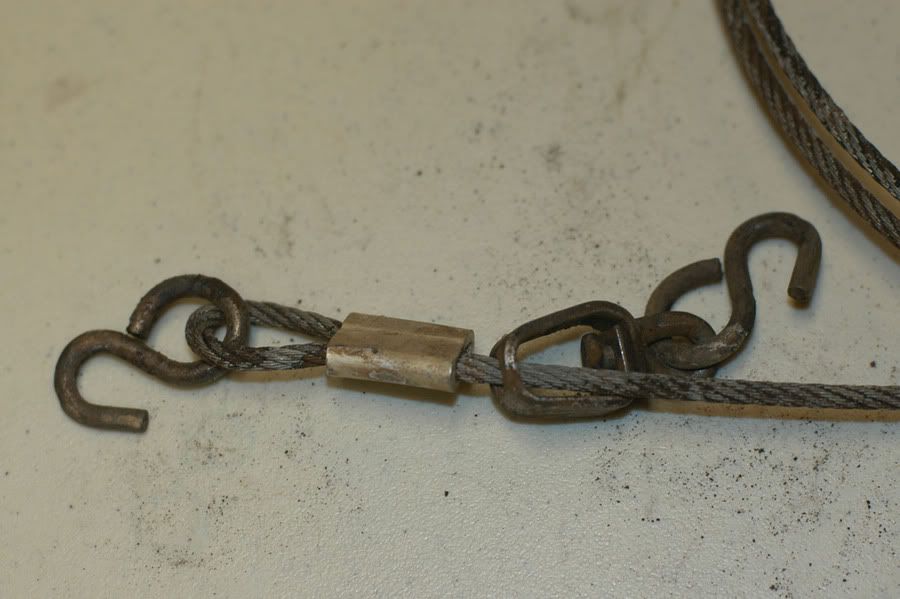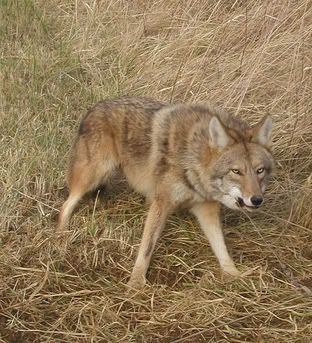A very successful trapper taught me this technique a few years ago and it works very well. We got over 100 coyotes last year using this method.
Our method is to snare them at the crossunders in woven wire cattle fence. We set it up so the coyote is safely away from the fence when we arrive. He can't get hung up in the fence or the brush around it. He will be sitting there like a dog on a leash.
First, I am not here to hype anybody's supply company. But I will say that everything I got for snaring came from
The Snare Shop I buy 3/32 7 X 7 Galanized Aircraft cable 500 feet at a time. There are a variety of locks, swivels and hardware you can choose. I experimented a little and what I use works just fine for me.
My method includes a run. So you will need 3/16 cable too.
Here goes:
First to build your snares and the snare run you will need the
following tools:
cable cutter (go ahead and get a
C-7 pair ),
good slip joint pliers,
an anvil of some sort,
a ballpein hammer,
a measuring tape.
You will need the
following hardware:
Snare swivels
Swivel washers
Sliding locks
Crunch proof swivels
End nuts for 3/16 cable
Aluminum double ferrule for 3/16 cable
Standard deer stops in 3/32 size
Aluminum single ferrule for 3/32 cable
Good solid "S" hooks.
Other things you will
need for the trapline:
18" rebar stakes with welded washer top
Heavy hammer
"S" hook tool 28ga. annealed wire (Tractor supply has this)
wire cutters
To make things go easier and faster, decide how many snares you want to make at one time and cut all the 3/32 cable to length at once. I usually make about 100 at a time.
Cut your 3/32 cable to 30 inches. First thing you install is the aluminum stop. Now slide on a swivel washer, then the swivel. Put on the
first half of your lock. Then hammer on a standard deer stop 8 inches from the free end. Run the free end through the other half of the lock and then hammer on a stop at the free end. The finished product should look like this.

You have just made the snare part.
For the cable run, cut the 3/16 cable to a length of 9 feet. Using an aluminum double ferrule make a loop in one end large enough to accomodate the rebar stake, but small enough to hold against the washer. I put my trap tag on this end.
It should look like this.

Now at the half way point hammer on an annealed end nut. Now take a crunch proof swivel, install the "J" hook out through the wider bottom of the swivel and close it tight around an "S" hook. Slide the crunch proof on the free end so it will slide toward the nut you just installed but not back up. Make another loop with an aluminum double ferrule and install an "S" hook on this end. Here is what this will look like.

I boil my snares and cable runs once completed for one hour in water and baking soda. I also dye them in walnut hulls. They take a little of the dye but not much.
Here is what the entire package looks like.
 INSTALLATION:
INSTALLATION:Find a slick crossunder in woven wire fence. Take the 3/16 cable run you made and hook the "S" hook on one end to the bottom fence wire to one side of the crossing. Pull the cable straight out and tight. Drive the stake through the loop all the way to the ground.
Now slide the crunchproof up to the fence, close the "S" hook around your snare swivel and with a piece of 28ga. wire wrapped around the next wire up and formed into a little "j", hang the snare in the hole. Make the loop about 9 or 10 inches and hold it up off the ground an inch or two. Of course hang the snare by the cable not by the loop.
No matter which direction the coyote enters the hole he will get snared, run the snare out to the stop at the half way point and be unable to return to the fence to get hung up or tangled. The deer stop on the snare prevents injury to non-targets.
Here is what you ought to see the next morning.

Hope this is of some use to others.
Merry Christmas







